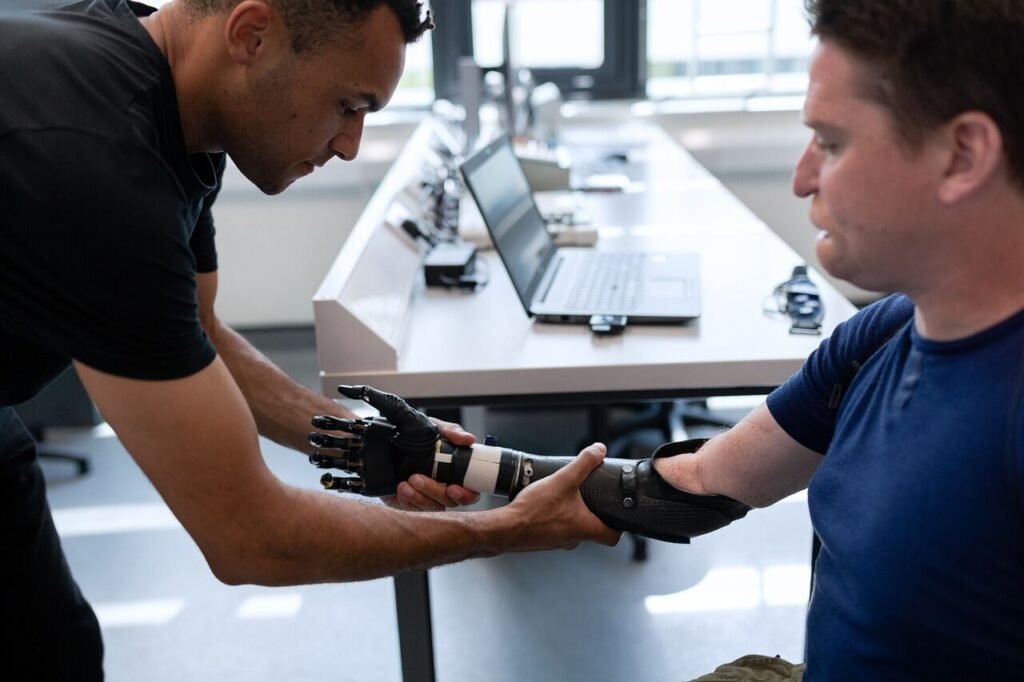The moment someone tries on a prosthetic hand for the first time, it’s more than just a technical trial—it’s deeply personal. It’s a glimpse of what life can look like again. Every demo, every fitting, and every detail matters. Because prosthetics are not only about function. They are about identity, confidence, and the joy of feeling whole again.
Today, the world of prosthetics is changing fast. No longer are people limited to one-size-fits-all designs. Now, individuals can choose how their prosthetic looks, feels, and expresses who they are. From custom covers to natural skin tones to artistic designs, personalization has become a central part of the prosthetic experience.
This evolution is what makes customization preview in prosthetic demos so special. It allows users to see and feel how their future limb will look and move—before they even get it. It’s not just about color or cosmetics. It’s about connection. It’s about giving people the power to choose, to imagine, and to be part of the creative process that shapes their new limb.
In this article, we’ll explore how the idea of customization preview is transforming prosthetic demos, why it matters so deeply, and how small design choices—like the curve of a finger, the shade of the skin, or the texture of a cover—can make a world of difference in someone’s confidence and comfort.
We’ll also look at how technology, local manufacturing, and human-centered design are coming together to create prosthetics that aren’t just functional tools, but personal statements of style and strength.
Why Customization Matters
A Prosthetic Is More Than a Tool
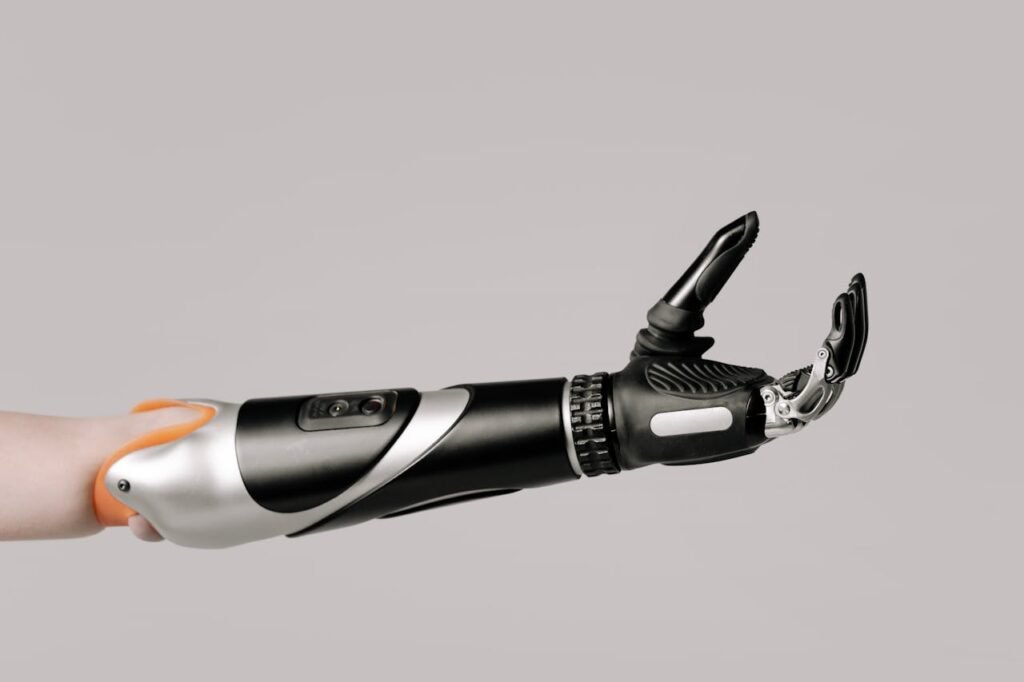
For anyone who has lost a limb, a prosthetic isn’t just a replacement. It becomes part of their daily life, something they rely on every single day. It helps them dress, cook, shake hands, and hug their loved ones again.
When something is that personal, it needs to feel like theirs. A prosthetic that looks and feels right can make all the difference in how a person sees themselves.
Restoring Confidence, Not Just Function
Many people are nervous during their first prosthetic fitting. They worry about how it will look in public, how others might react, or if it will feel natural. Customization gives them control. It allows them to make choices that reflect their taste and comfort.
When someone picks the color of their prosthetic or the style of its cover, they start to take ownership of it. That small act builds confidence. They no longer feel like they are wearing a device—they feel like they are wearing a part of themselves.
The Psychology Behind Personal Design
Our sense of identity is closely tied to how we see ourselves. For someone using a prosthetic, the look of it can influence how they feel socially and emotionally. A hand that looks closer to their skin tone helps them blend in when they want to. A brightly colored or patterned cover helps them stand out when they choose to.
Customization allows people to choose how much attention they want to draw. It gives them the freedom to switch between blending and expressing, depending on the moment. That emotional flexibility is powerful—it puts people back in control of their image.
From Acceptance to Expression
In the past, prosthetics were made mostly for function. But now, more people want their prosthetic to express who they are. Some prefer natural, lifelike hands. Others love bold, artistic designs that show strength and individuality.
Customization turns a prosthetic into something personal and expressive. It helps people move from acceptance—“I need this to function”—to expression—“I love how this represents me.” That shift is life-changing.
How Demos Are Changing
The Traditional Way of Testing
Earlier, prosthetic demos were mostly mechanical. A person would test how well a device moved, how comfortable the socket was, and how responsive the grip felt. The focus was on performance, not appearance.
While that was important, it left out something essential—the emotional connection. People wanted to see how their future prosthetic would look on them, not just how it worked.
Introducing Customization Previews
Now, modern prosthetic demos go beyond movement. They include customization previews—interactive sessions where users can explore different covers, colors, and finishes before finalizing their device.
Imagine sitting in a demo room and being able to visualize your future prosthetic hand in your chosen skin tone, finish, or design pattern. You can mix and match, explore combinations, and even see digital renderings of how it will look when you wear it.
This is what makes customization previews so exciting. They transform the demo experience from a technical trial into a personal discovery.
The Role of Technology in Demos
With the help of 3D scanning, digital rendering, and smart visualization tools, users can now see a near-real version of their prosthetic even before production starts. This not only reduces uncertainty but also creates a sense of anticipation.
When someone can picture their future limb clearly, it builds emotional readiness. It reduces the gap between “trying” and “owning.” It also allows manufacturers to tailor every small detail with precision.
Why Personalization Boosts Satisfaction
People who go through customization previews tend to feel happier and more confident with their final prosthetic. They know exactly what to expect. They’ve been part of the design process, not just the fitting process.
That involvement makes a difference. When users help design their prosthetic, they take pride in it. It feels like a personal project, not a medical product. And that emotional ownership leads to better long-term use and satisfaction.
The Emotional Power of Choice
Reclaiming Control After Loss
Losing a limb is a major life change. It can make people feel like they’ve lost control over how their body looks and moves. Customization brings that control back.
When someone can choose the tone, the design, or even the texture of their prosthetic, they reclaim the right to decide how they are seen. It’s not about hiding or covering up—it’s about taking ownership.
That sense of control builds self-esteem. It makes recovery not just physical but emotional.
How Color Impacts Mood
Colors affect the way we feel. Warm tones can create comfort, while bold shades can inspire energy and confidence. In prosthetics, color is a quiet but powerful form of self-expression.
A person might choose a skin-tone shade to blend naturally at work and a bold, metallic finish for events or sports. Each choice reflects how they want to feel in that moment. Customization allows that flexibility, letting people adapt their prosthetic to their lifestyle.
The Role of Aesthetics in Acceptance
For many new users, the first few weeks with a prosthetic can be overwhelming. They’re learning to move differently, to balance again, to trust the device. When the prosthetic looks and feels good, the process becomes easier.
It’s not vanity—it’s comfort. A prosthetic that looks right helps people connect with it faster. They’re more likely to wear it daily, practice more, and eventually master it.
Turning Technology into Emotion
At the heart of all this is empathy. The best prosthetic technology is not just about engineering—it’s about emotion. Every curve, texture, and color choice can help someone feel more like themselves again.
Manufacturers who understand this are changing lives. By focusing on customization previews, they’re not just showing products—they’re helping people rediscover confidence and identity.
Covers and Materials
More Than Just a Protective Layer
When people first hear the word “cover,” they often think it’s just a simple outer shell for a prosthetic hand. But covers are much more than that. They protect the internal mechanics, add comfort, and play a big part in how natural or stylish the prosthetic looks.
A good cover doesn’t just hide the machinery. It shapes the overall appearance, giving the prosthetic a human-like form or a sleek, futuristic look—depending on what the person prefers.
Softness, Strength, and Style
Modern prosthetic covers are made using advanced materials like silicone, thermoplastic, and flexible polymers. These materials are lightweight, strong, and comfortable against the skin.
Silicone covers, for example, feel soft and realistic. They can mimic the look and texture of human skin. Thermoplastic covers, on the other hand, are durable and ideal for active users who need extra protection and flexibility.
Every material has its own personality. Some feel natural and gentle. Others are sporty and bold. The right choice depends on lifestyle, daily activities, and how someone wants their prosthetic to feel and look.
The Rise of Custom Covers
Customization has completely transformed how prosthetic covers are made. Earlier, users had to choose from a few standard designs. Today, they can personalize everything—from the shape and shade to surface details like veins or nail color.
Some people even request covers with artistic prints or metallic finishes. Others prefer minimalist, neutral tones. With 3D printing and digital modeling, prosthetic makers can now bring almost any design idea to life.
The goal is to make the prosthetic feel as natural—or as unique—as the person wearing it.
Blending Function with Art
Customization previews during demos allow users to see different cover styles in real time. They can compare finishes, touch sample materials, and decide what feels most “them.”
This blending of function and art is where modern prosthetics truly shine. A cover no longer hides technology—it celebrates it. It turns the prosthetic into a piece of personal art, shaped by human creativity and supported by science.
Colors and Textures
The Psychology of Color Choice
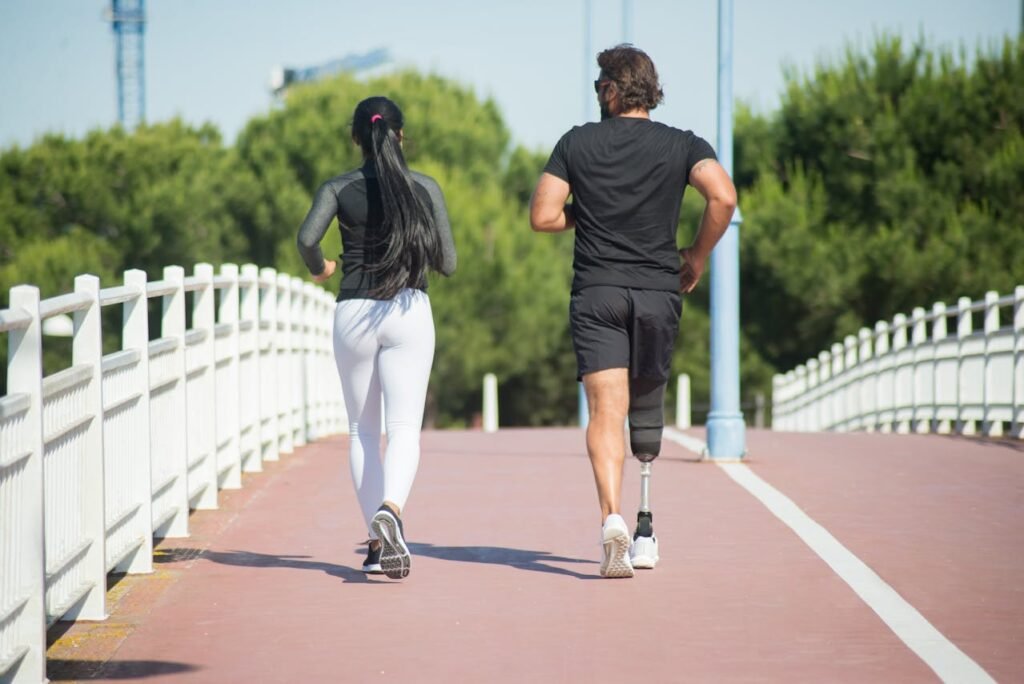
Color is not just a visual detail—it’s an emotional language. The shade a person chooses for their prosthetic can say a lot about how they see themselves and how they want the world to see them.
Some choose natural skin tones because they want their prosthetic to blend seamlessly. It gives them comfort and confidence in social settings. Others go for vibrant, bold colors—red, silver, blue—to make a statement of strength and individuality.
Every choice has meaning, and that meaning is deeply personal.
Matching Skin Tones Naturally
One of the biggest advances in prosthetic design is the ability to match skin tones accurately. Earlier, prosthetics often came in limited shades that didn’t suit everyone’s complexion. But with digital color mapping, technicians can now blend pigments to create a near-perfect match.
This helps users feel more at ease in everyday life. When their prosthetic hand naturally matches their skin, it becomes part of their body image—not an external device. It reduces self-consciousness and supports emotional healing.
Textures That Feel Real
Color is only half the story. The texture of the prosthetic is equally important. Realistic surface details like pores, veins, or tiny skin lines make the prosthetic feel more lifelike.
These details are added by hand or with advanced molding techniques. They give depth and realism to the surface, helping users feel a stronger connection with their new limb. For many, this realism brings comfort—it makes the prosthetic feel more like them.
Going Beyond Realism
But not everyone wants their prosthetic to look like a natural hand. Many people prefer a futuristic or mechanical look. Some choose matte black finishes or brushed metal tones. Others go for transparent or neon-colored covers that show off the inner mechanics proudly.
These bold styles are empowering. They show that a prosthetic isn’t something to hide—it’s something to celebrate. Customization previews make it easy to explore these creative options visually before making a decision.
Personal Style Meets Practicality
A good demo includes both emotional and practical discussions. Color and texture aren’t just aesthetic—they affect maintenance and comfort too.
Darker finishes might resist stains better. Smooth textures are easier to clean. Matte surfaces reduce glare in bright light. When people explore these details during a demo, they make informed choices that suit both their style and their lifestyle.
Customization previews ensure that by the time the prosthetic is made, it fits not just physically but emotionally too.
Cosmetic Finishes and Realism
Bridging Function and Beauty
Cosmetic finishing is the art of making prosthetics look and feel natural. It’s where engineering meets artistry. While functionality gives movement, cosmetic finishing brings life to every detail.
From nails to knuckle lines, from gloss level to color shade—each part is crafted to match real human features. This attention to detail helps users feel like they’re seeing their own hand again.
Skin Shades and Subtle Details
Each person’s skin tone has undertones—warm, cool, or neutral. Skilled prosthetic artists study these nuances carefully. They mix pigments by hand to achieve shades that complement the user’s skin perfectly.
Some even add subtle freckles, tiny moles, or fine veins for realism. The goal is not perfection, but authenticity—something that looks and feels naturally human.
When a person sees their custom prosthetic for the first time and says, “It looks just like me,” that’s a powerful moment. It’s a mix of relief, pride, and acceptance all at once.
The Role of Nails and Finishing Touches
Fingernails are small details, but they carry meaning. They’re part of our self-expression. Many prosthetic users love having options like nail color, gloss, or length. Some prefer natural nails with a matte finish, while others choose polished or colored nails for a stylish look.
During demos, showing nail variations helps users imagine everyday life—how their prosthetic will look when they hold a coffee cup, type on a phone, or shake hands. These details make the prosthetic feel truly personal.
Realism and Comfort Go Hand in Hand
Cosmetic realism isn’t just about looks—it supports emotional comfort. When a prosthetic mirrors the user’s natural features, it becomes easier to accept and integrate.
This acceptance leads to better daily use and more confidence. The prosthetic stops feeling like an external aid and starts feeling like part of their identity. That’s why customization previews are essential—they help bridge the gap between imagination and reality before the final product is built.
When Art Meets Technology
Every realistic prosthetic is a mix of technology and human touch. Machines shape precision components, while artisans finish them by hand. This partnership between science and art is what makes modern prosthetics extraordinary.
Customization previews showcase this process beautifully. Users see how technology adapts to them—not the other way around. It reminds them that prosthetics today are not just medical devices but personalized expressions of who they are.
Expressing Identity Through Design
In the end, cosmetic design is about self-expression. Some people want their prosthetic to reflect who they were before limb loss. Others want it to represent who they’ve become.
A sleek, high-tech finish can symbolize strength and modernity. A soft, natural look can reflect grace and simplicity. Each finish tells a story—a story only the wearer can tell.
That’s what makes customization previews so powerful. They don’t just help people pick colors or textures. They help them rediscover themselves through design.
Digital Customization Tools
Technology That Puts the User First
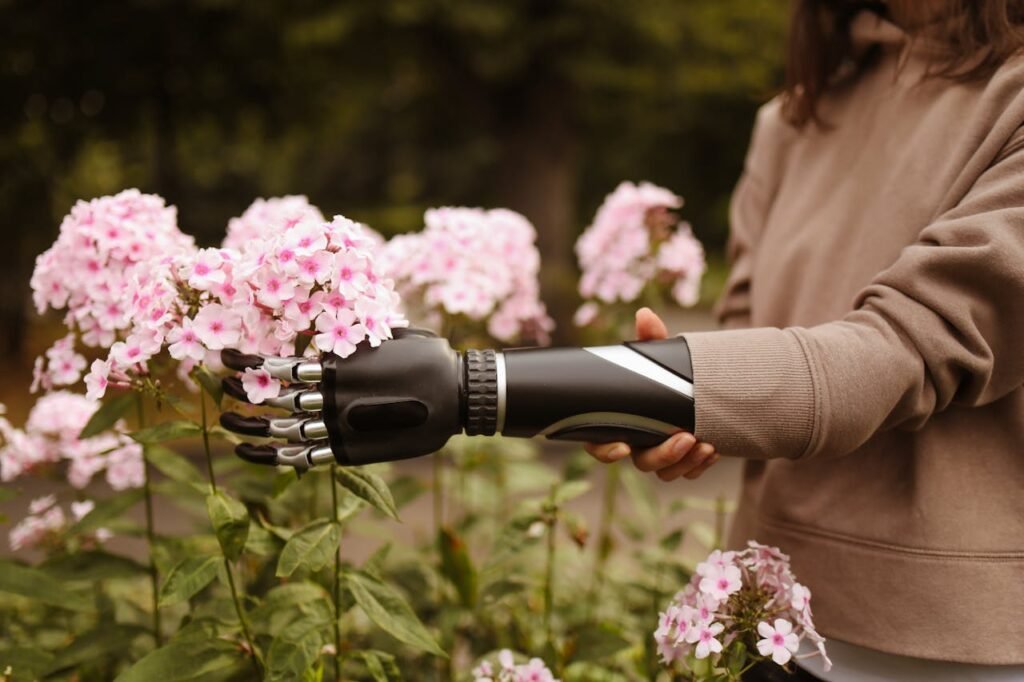
The way prosthetic customization happens today has been transformed by digital tools. Technology has made it possible to create a deeply personal, interactive, and realistic preview experience for every user.
Instead of imagining what their prosthetic will look like, users can now see it on a screen—rotating, zooming in, changing colors, and swapping textures instantly. It feels almost like trying on clothes virtually, but with something far more meaningful at stake.
These digital experiences remove uncertainty. They help people feel more comfortable and confident with their decisions before the final device is built.
The Role of 3D Scanning
3D scanning plays a huge role in creating accurate, comfortable prosthetics. A quick digital scan captures every contour and measurement of the user’s limb, ensuring that the final fit is perfectly tailored.
During the demo phase, these scans are also used to generate realistic models for customization previews. Users can view their future prosthetic on-screen, shaped exactly to their anatomy.
This is incredibly empowering. It lets people see how the device will actually look on them, not on a generic model. The sense of realism builds trust and excitement.
Virtual Color and Material Preview
Color selection is no longer limited to printed charts or sample swatches. With digital rendering tools, users can explore dozens of shades and materials in real time. They can visualize metallic tones, matte finishes, or lifelike skin shades on their prosthetic model instantly.
This visual feedback helps people make confident choices. It’s also practical—it prevents mismatched expectations after production.
Technicians and designers can easily adjust lighting and background during the preview, showing how the prosthetic will appear in sunlight, indoor light, or shade. This attention to real-world detail is what makes digital customization so valuable.
Touchscreen and Interactive Interfaces
In many modern clinics, customization sessions now use touchscreen displays or tablets. The user can interact directly with their digital model—rotating, zooming, and trying different designs with simple gestures.
Some systems even include augmented reality (AR). With AR, users can hold a tablet in front of their residual limb and see how the prosthetic will look attached to their own body in real time.
It’s a powerful and emotional experience. Seeing themselves complete again, even virtually, can bring hope and joy long before the final prosthetic arrives.
Accuracy Meets Emotion
The biggest advantage of digital customization tools is how they blend precision with emotion. On one side, they provide technical accuracy—exact measurements, realistic colors, and fit predictions. On the other side, they allow emotional connection by making users part of the creative process.
Technology doesn’t replace the human touch here—it enhances it. It makes collaboration between the user, the clinician, and the designer smoother, faster, and more meaningful.
How Clinics Showcase Custom Options
The New Face of Prosthetic Demos
Prosthetic demos used to be quiet, clinical sessions. Today, they are dynamic and personal experiences. Clinics have turned demo spaces into creative studios where technology, design, and care come together.
These demos aren’t just about testing grip or motion. They’re about discovering style, exploring comfort, and previewing possibilities. The goal is to help users imagine how life with their new prosthetic will look and feel.
A Welcoming, Personal Environment
A good demo environment feels warm and inviting. It’s not just a test room—it’s a space where users can explore freely and express themselves.
Clinicians take time to understand each person’s preferences and daily routine before even showing products. This conversation builds trust and ensures that the customization options match the person’s life, not just their limb.
During the session, users are encouraged to touch materials, compare covers, and visualize their choices through digital or physical samples. Every detail is explained clearly, without jargon.
Storytelling Through Samples
Many clinics now display sample prosthetics in different finishes and colors to help users see real-life examples. A matte black hand next to a lifelike silicone one can spark ideas and conversations.
Each sample tells a story—of a student who wanted something discreet, or an athlete who wanted something bold and strong. These stories help new users connect emotionally with the idea of customization. They realize they’re not just getting a prosthetic—they’re creating something personal.
Guided Customization Sessions
During a demo, the clinician often acts as both guide and collaborator. They help users explore options that fit their personality and lifestyle.
Some users might lean toward natural shades that match their skin. Others might want something expressive, like a carbon-fiber pattern or a bright metallic hue. The clinician listens carefully and helps refine those ideas into realistic designs.
Every step of the process—from color selection to final visualization—is done together. It’s not about selling a product; it’s about co-creating an experience that feels right for the person.
Integrating Feedback Instantly
The best clinics use real-time feedback tools. When a user chooses a color or texture, they can instantly see the change on-screen. If they’re unsure, they can compare side by side.
This interactive approach makes the process fun and empowering. Users feel like designers of their own prosthetic, not just recipients. It turns what could have been a technical appointment into a moment of creative expression.
Creating Emotional Moments
What makes these demos memorable are the emotions they bring. Seeing their personalized prosthetic—whether virtually or in sample form—often moves people deeply.
For many, it’s the first time they’ve seen themselves whole again after an amputation. It’s not unusual for tears to follow smiles. This emotional connection is what drives true satisfaction and long-term confidence in using the prosthetic daily.
Customization previews aren’t just about color palettes or cosmetic covers. They are about hope, choice, and belonging.
The Future of Personalized Prosthetic Demos
The Evolution of Prosthetic Design
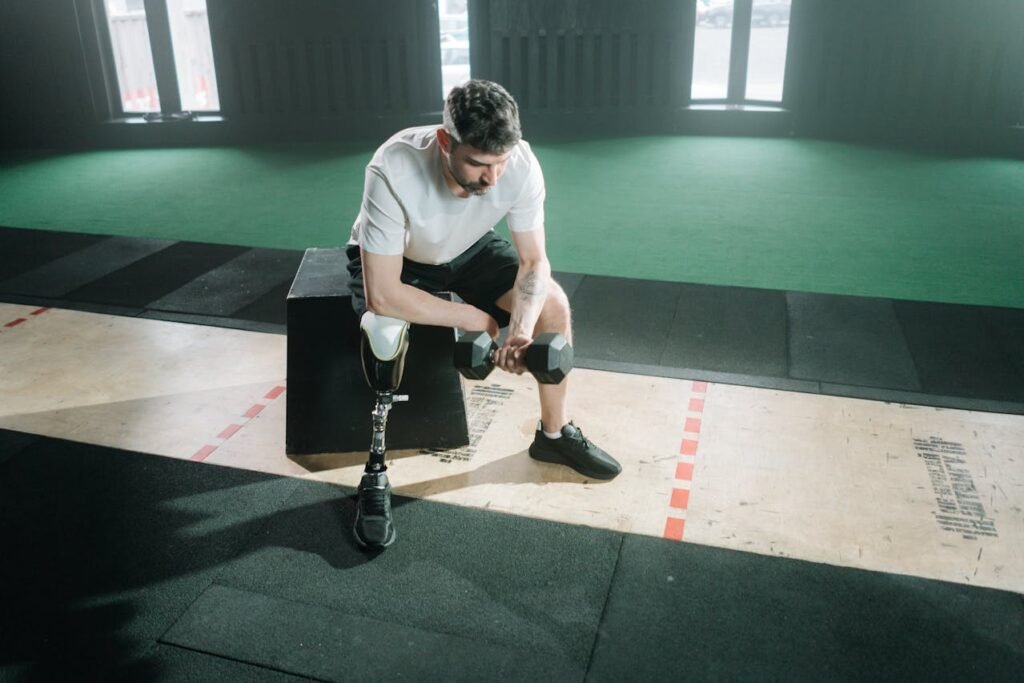
The future of prosthetic customization is full of promise. As technology evolves, personalization will become faster, deeper, and even more realistic.
From digital avatars to smart skin simulations, the industry is moving toward prosthetics that not only look real but also respond naturally to touch, light, and temperature.
Demos of the future will be immersive—users might walk into virtual showrooms, try different designs through VR headsets, or even “wear” their prosthetic virtually before it’s built.
Artificial Intelligence and Smart Recommendations
Artificial intelligence is already transforming many areas of healthcare, and prosthetics are no exception. In the coming years, AI could analyze a person’s lifestyle, skin tone, and daily habits to suggest color, texture, or cover combinations that best match their personality and needs.
Imagine a system that knows you’re an outdoor enthusiast and recommends a lightweight, dust-resistant cover in an earth tone. Or one that identifies your skin undertone from a photo and presents perfectly matched shade options instantly.
These small innovations will make customization smoother and more intuitive than ever before.
Sustainable and Local Customization
Another exciting shift is the rise of sustainable materials and local production. Instead of importing expensive components, more companies—like RoboBionics—are developing local solutions that are both eco-friendly and affordable.
This approach allows faster turnaround for personalized designs. It also gives users access to locally made customization options—skin shades that match Indian tones better, materials suited to local weather, and covers that balance beauty with durability.
The future of customization in prosthetic demos is not just high-tech—it’s also deeply human and sustainable.
Virtual Collaboration and Remote Demos
As digital tools grow more advanced, customization sessions may no longer require in-person visits. Remote demos, powered by virtual consultations, are becoming a reality.
Through secure video calls and 3D visualization software, users can explore customization options from home. They can rotate models on-screen, choose colors, and even get digital mockups sent directly to their email.
This opens doors for people living far from prosthetic centers. It ensures that distance never limits access to quality care and personalization.
Touch Feedback and Emotional Design
In the near future, demos may include haptic feedback—allowing users to feel the texture of a surface through digital touchpads. Imagine being able to sense the smoothness of silicone or the roughness of a matte finish virtually before making a choice.
This will take personalization to a new emotional level. It will make the preview process immersive and almost lifelike, giving users even more confidence in their decisions.
A Human-Centered Tomorrow
No matter how advanced technology becomes, the heart of customization will always be human connection. Demos are not about machines—they’re about people helping people feel whole again.
The future will blend empathy and innovation beautifully. Every prosthetic fitting will be a creative collaboration between engineers, clinicians, and users. Every demo will be an opportunity to rediscover hope, identity, and pride.
Customization previews will continue to remind us that prosthetics are not symbols of loss, but of resilience. They represent courage, creativity, and the beauty of individuality.
Bringing It All Together
Beyond Mechanics and Movement
When we think about prosthetics, it’s easy to focus only on the mechanics — the motors, sensors, or grip strength. But what truly transforms a prosthetic from a device into something deeply personal is customization.
It’s the human touch in the process that makes it special. The ability to choose a favorite color, a texture that feels right, or a design that reflects one’s spirit can mean more than any technical feature.
Because at the heart of every prosthetic story is a person rediscovering independence — and how they want to express it.
The Power of Personal Connection
Every customization preview begins as a conversation. The user shares their story, their hopes, and sometimes their fears. The clinician listens carefully, guiding them toward designs that make them feel comfortable and proud.
That conversation builds trust. It transforms the demo from a clinical step into a shared journey. Together, they create something meaningful — not just a prosthetic hand, but a reflection of a life ready to move forward again.
When users are invited to be part of the design, they don’t just receive technology — they help shape it. And that sense of involvement creates a deeper emotional bond with the prosthetic they’ll wear every day.
When Choice Becomes Empowerment
For someone using a prosthetic, small choices can bring enormous empowerment. The moment they pick their color, their cover, or their finish, they reclaim control over something that once felt lost.
These choices might seem simple, but they carry emotional weight. They allow people to say, “This is who I am.” Whether they choose a natural tone that blends in or a bright finish that stands out proudly, it’s their decision — and that’s what matters most.
Customization turns medical recovery into personal discovery. It replaces fear with excitement, hesitation with pride, and dependence with confidence.
Empowering Through Choice
The Emotional Impact of Seeing Yourself Again
When someone sees their customized prosthetic for the first time — in person or even digitally during a demo — it’s often a quiet, powerful moment. There’s recognition in their eyes. They see themselves again, not as a patient, but as a person.
That emotional shift is life-changing. It gives people strength, courage, and a new sense of identity. And it starts right there in the demo room — through the experience of customization preview.
Seeing options laid out visually helps people connect emotionally to what’s coming next. It helps them imagine daily life — holding a pen, lifting a cup, greeting a friend — and feeling whole again.
The Role of Clinics and Makers
Behind every great customization preview is a team of people who care — clinicians, designers, and engineers who put empathy first. They understand that prosthetics are not just about technical performance. They are about restoring dignity and joy.
The best prosthetic makers know that true innovation isn’t only in sensors or motors — it’s in the way they listen to users. By designing customization tools that are easy, visual, and emotional, they give every user a chance to be seen, heard, and celebrated.
From Technology to Humanity
Modern prosthetics have come a long way. They respond to muscle signals, adjust grip automatically, and even provide sensory feedback. But what makes them truly human is customization — the art of personal connection through design.
Every choice, from cover to color, adds a layer of meaning. It turns technology into emotion. It helps people look at their prosthetic not as a reminder of loss, but as a symbol of resilience.
When a prosthetic feels right — visually, physically, and emotionally — it becomes a natural part of the person’s life story.
A New Era of Personal Prosthetics
The Future Is Personal
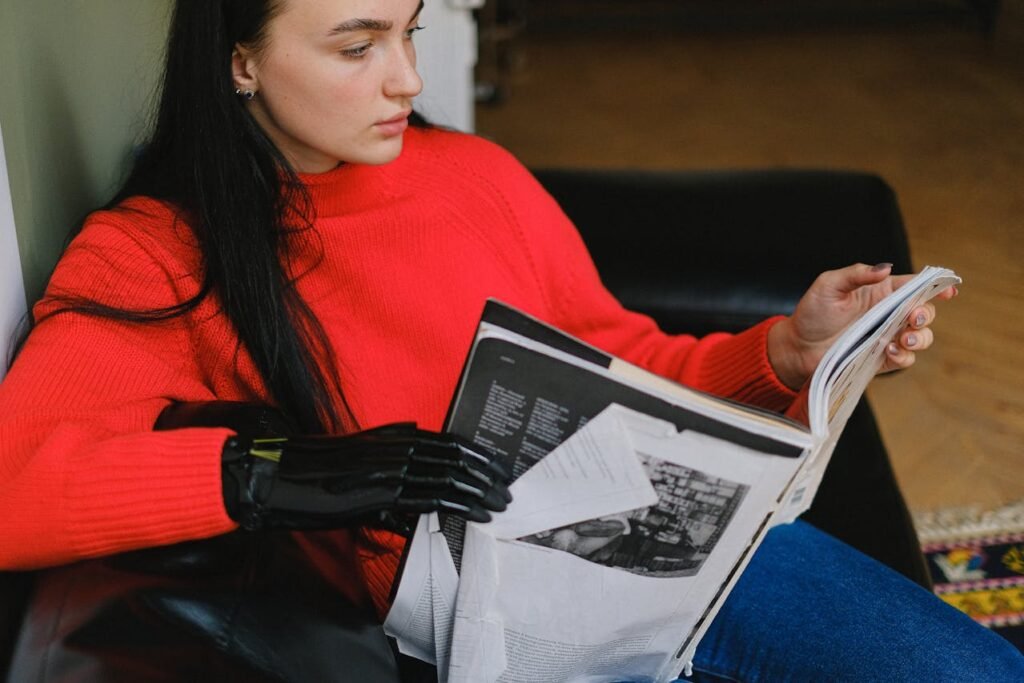
We are entering an era where prosthetics are designed around the user, not just for them. Customization previews are leading this change, showing how empathy and technology can work hand in hand.
In this new era, prosthetic demos are no longer just tests of fit and function. They’re experiences that spark imagination and build connection. Users get to explore, create, and truly see what their prosthetic will look and feel like before it even exists.
This shift from technical demos to personalized design sessions is making prosthetics more human than ever before.
Affordable Innovation, Made for Everyone
What makes this transformation even more meaningful is accessibility. In India, where advanced prosthetics were once limited to imported options costing over ₹10 lakh, local innovation is changing the story.
Companies like RoboBionics are proving that personalization and affordability can go hand in hand. With products like the Grippy™ Bionic Hand — proudly made in India — users can now access world-class prosthetics designed for their needs, lifestyle, and personal taste.
And with customization previews included in demos, every person gets to experience what their prosthetic will look like before it’s even built. It brings transparency, trust, and excitement into the journey.
Redefining What It Means to Be Whole
Wholeness isn’t just about physical form — it’s about how a person feels inside. A prosthetic customized to match their identity helps them feel complete again. It gives them the confidence to go out, meet people, and live life without hesitation.
Every cover, every color, every detail matters because they reflect individuality. And that individuality deserves to be celebrated.
Where Technology Meets Humanity
The future of prosthetic demos lies in balance — where technology supports creativity, and where data serves emotion. Customization previews are not just about aesthetic options. They are about inclusion, self-expression, and emotional healing.
They remind us that a prosthetic is not the end of a story, but the beginning of a new one. It’s about rediscovering joy, rebuilding confidence, and redefining what strength looks like.
The Heart of Customization
Seeing People, Not Patients
At its core, customization is about respect. It says, “You matter. Your choices matter. Your story matters.”
Every person who walks into a demo session brings a unique journey. And when they are invited to co-create their prosthetic — to choose its color, cover, or design — they’re being seen as individuals, not as cases or measurements.
That recognition builds a powerful bond. It’s what turns a clinical process into a human experience — one filled with trust, dignity, and hope.
Celebrating Every Step Forward
Customization previews are a celebration of progress. They remind users that technology can be beautiful, that recovery can be creative, and that every small choice can make a big emotional difference.
It’s not just about how the prosthetic looks. It’s about how the person feels when they wear it — strong, confident, and proud of who they are.
Every demo, every preview, every smile in front of the mirror is a step toward that feeling of wholeness.
Conclusion: The Beauty of Choice
The future of prosthetics is not only about movement — it’s about meaning. It’s about helping people shape the way they see themselves and the world around them.
Customization previews, through covers, colors, and cosmetics, have made prosthetic demos more personal, emotional, and empowering than ever before. They allow every individual to become a designer of their own story.
And that is the real beauty of modern prosthetics — not just in how they move, but in how they make people feel.
Because when technology listens, when design feels personal, and when every person gets to see themselves reflected in their prosthetic, that’s when true healing begins.
If you or someone you know is exploring the possibility of a bionic hand, schedule a demo today and experience the joy of customization firsthand. See what your future prosthetic can look like — and more importantly, feel like.
Visit www.robobionics.in/bookdemo to begin your journey toward a prosthetic that’s built not just for you, but with you.



